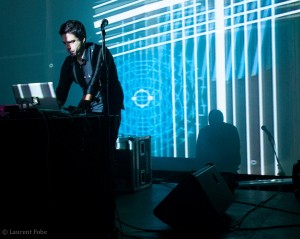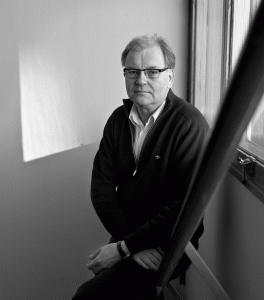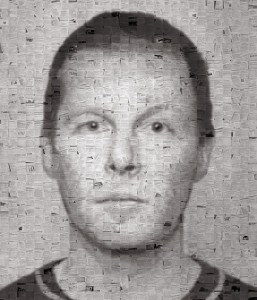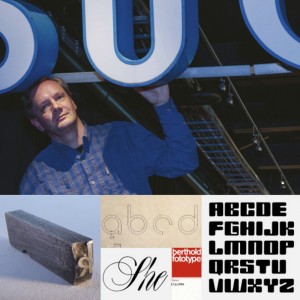Dr. Nick Bryan-Kinns is Senior Lecturer in Computer Science (User Interface Design), Director of EECS Admissions (Undergraduate and Postgraduate), and the Deputy Dean for Science and Engineering at Queen Mary, University of London. He leads the Interactional Sound and Music Special Interest Group in the Centre for Digital Music and has published award winning international journal and conference papers on his funded research on mutual engagement, cross-modal interaction, and tangible interfaces. He was a panel member for the National Science Foundation’s CreativeIT funding panel, and provided expert consultation for the European Commission’s funding of Creativity and ICT. He was involved in two research networks focusing on the art-computer cross-over and future design, chaired the Association of Computing Machinery (ACM) Creativity and Cognition conference 2010, and co-chaired the British Computer Society (BCS) international HCI conference 2006. Dr. Bryan-Kinns is a BCS Fellow, and a recipient of the ACM Recognition of Service Award, and BCS Recognition of Ten years service. In 1998 he was awarded a Ph.D. in Human Computer Interaction from the University of London.
Rasa Smite presents: Creative Networks, 14.2.2013, 17:00, Media Factory
During mid-February 14-15.2. Rasa Smite & Raitis Smits from RIXC (Riga Centre for New Media Culture) were invited to Helsinki, creating and contributing to two events, open to professionals, researchers, students and other interested persons.
The first, a lecture by Rasa Smite on ‘Creative Networks – from open ideas and collaborative explorations to sustainable practices’, will take place Thursday 14.2. from 17.00-19.00 at Aalto Media Factory auditorium. See abstract below.
Secondly, the following afternoon, join an open round-circle discussion with Rasa Smite & Raitis Smits on Friday 15.2. from 13.00-16.00 at AV-Arkki office, about ‘media art histories’ from the perspective of organisations, researchers or practitioners archiving and representing their own practice. Welcome to bring your own examples, share experiences and ask advice from the circle.
RIXC have been long-term collaborators with Pixelache since 2004, most recently in the Renewable Network & Techno-ecologies theme. Furthermore, Rasa Smite & Raitis Smits are co-organisers of the upcoming international Media Art History conference that will take place in Riga in October 2013.
Both events are organised as a collaboration between Aalto ARTS Media Research and Pixelache, in cooperation with AV-Arkki, and takes place as part of the Pixelversity 2013 programme.
Andrew Gryf Paterson
https://www.facebook.com/events/343892185725627/
Creative Networks – from open ideas and collaborative explorations to sustainable practices
By Dr. sc. soc. Rasa Smite
Associate Professor in New Media Art / Liepaja University
Researcher of Art Research Lab of Liepaja University
Founder of Riga Centre for New Media Culture RIXC
In this lecture I will look at transformations that ‘creative networks’ have undergone since the early days of Internet culture during the roaring mid 1990s, in order to discuss the influences and the potentials it contains for developing sustainable practices today.
It is not just a coincidence that the artists who once were active contributors of pioneering Internet culture, today are among those, who are in the vanguard questing for a more sustainable future. On the one hand, by tracing back the line of creative networking into the 90s, I would like to analyze the particular facets of early Internet culture, such as process-based art practices, collective explorations, autonomous and shared infrustructures, new social dynamics and feedback creation as well as other collaboration experiences, — as they contain innovation potential that can and shall be exploited today. On the other hand, my study of pioneering network cultures reflects also on the larger changes in the social structure of our society, who in the last two decades has been influenced by both – rapid “techno-scientific” development and “techno-social” transformation.
Hence, the growing tendency in contemporary media art to address and work with sustainability issues is not just a new trend, but rather, a testimony for an ongoing fundamental shift from a “techno-scientific” to “techno-ecological” paradigm. In order to show this transformation, I will be introducing and analyzing sustainable practices of Renewable Network artists, including our own work at RIXC, thereby also making more concrete the outlines of the suggested “techno-ecological” paradigm.
http://rixc.lv (RIXC, The Center for New Media Culture and Net Art Server, since 1996)
http://renewable.rixc.lv (Renewable Network)
http://renewable.rixc.lv/?p=976 (Creative Networks, In the Rearview Mirror of Eastern European History, by Rasa Smite)
Research symposium: Exploring cinematic spaces: frames, images, screens, May 3-4, 2013, Helsinki, Finland
The Aalto University’s ELO Helsinki Film School (Department of Film, Television and Scenography, School of Arts, Design and Architecture) will host a symposium on possibilities of different aspect ratios in cinematography and storytelling. We turn our gaze towards frame, the primary unit of film meaning and ask: What is an act of framing? How framing is used as an expressive resource? How depth and space in cinematic narratives are built within different aspect rations? What is cinematographer’s contribution to the process?
The symposium addresses these questions from different points of view. We try to gather existing multidisciplinary knowledge on the evolution of aspect ratios and composition of cinematic images, not forgetting the new tools of storytelling, the 3D and 220° panorama images.
The list of speakers consists of European cinematographers, computer game designers, researchers and cognitive scientists. The final programme will be published in mid-March, at the latest. The symposium is suitable for professionals, researchers and students interested in the questions of image composition. The event takes place at the Aalto ARTS, Media Centre Lume, Sampo hall (Hämeentie 135 C, Helsinki) and is supported by the Aalto University, Media Factory.
More information: Professor of cinematography, Timo Heinänen, timo.heinanen@aalto.fi and coordinator Kirsi Rinne, kirsi.rinne@aalto.fi
Kirsi Rinne
coordinator (research and doctoral studies)
Aalto University
School of Art, Design and Architecture
Department of Film, Television and Scenography
+358 40 5929466
Medialab Spring School for Doctors of Arts, May 6–8 2013
Theme: Memory Technologies: New Genres and Formats
Guest speaker: Prof. Geoffrey Bowkers, from the Center for Science Society and Technology at University of Santa Clara. (http://epl.scu.edu/~gbowker/)
3 Year Lecturer-Postdoctoral Fellow in Digital Storytelling at the University of Denver
The Department of Media, Film, and Journalism Studies in the Division of Arts, Humanities, and Social Sciences at the University of Denver invites applications for a three year lecturer-postdoctoral fellow beginning Fall 2013. Eligible candidates will have received a Ph.D. no earlier than June 2012, and have an expertise in teaching and scholarship in the areas of digital storytelling and digital journalism. We are particularly interested in candidates with knowledge of how these emergent practices are being taken up among diasporic communities.
The successful candidate/applicant will teach six courses over three quarters each year, including five courses in the common university-wide curriculum, one of which is a First-Year Seminar. First-Year Seminars are small (15 students), four-credit, academically rigorous courses that begin one week before the start of the regular fall term and that provide students with year-long mentoring and academic advising. The candidate will also teach four courses in the common curriculum. These will be undergraduate seminars that may be related to the candidate’s research interests and that are framed to meet university and departmental learning outcomes. The candidate will teach one course that fulfills department-specific needs. Holders of lecturer-postdoctoral fellow positions will have opportunities to participate in career development workshops and our division-wide faculty-mentoring program.
We will begin considering applications after February 15, 2013. For information about the Department of Media, Film, and Journalism Studies, please see http://www.du.edu/ahss/schools/mfjs/. Please complete the online application at https://www.dujobs.org/, and attach a c.v., the contact information for three references, and a letter of application that suggests courses to be taught or introduced. Additional materials can be sent to: Lecturer-Postdoctoral Search Committee, Department of Media, Film, and Journalism Studies, University of Denver, 2490 S. Gaylord St., Denver, CO 80208. The University of Denver is committed to enhancing the diversity of its faculty and staff and encourages applications from women, minorities, members of the LBGT community, people with disabilities and veterans.
To apply for this position, please visit our website at www.dujobs.org . The University of Denver is an EEO/AA Employer.
– – –
Erika Polson, Ph.D.
Assistant Professor
Media, Film & Journalism Studies
University of Denver
2490 S. Gaylord St.
Denver, CO 80208
Email: epolson@du.edu
Tel. 303.871.3831
===== General list info and FAQ: http://comm.umn.edu/~grodman/cultstud.html
Dissertation in New Media: MSc Nuno Correia: Interactive Audiovisual Objects, March 1, 2013, 12:00, Sampo auditorium
Academic dissertation to be presented for public examination with the permission of the Research Board of the Aalto University School of Art, Design and Architecture, in Sampo auditorium (Media Centre Lume), Hämeentie 135 C, on March 1, 2013, at 12 noon.
Professor Nick Bryan-Kinns from Queen Mary, University of London will act as the opponent.
Professor Lily Díaz will act as the Custos.
This dissertation studies four projects combining visuals, sound and interactivity by the author and André Carrilho (under the name Video Jack). The aim of the study is to create web-based interactive audiovisual art projects for integrated and simultaneous manipulation of sound and motion graphics, in a way that is coherent, flexible, easy to use, playful, and engaging to experience. From this study aim, three major research topics emerge: content, interactivity and experience.
The four projects included in the study are: Heat Seeker (2006), AVOL (2007), Master and Margarita (2009) and AV Clash (2010) [1]. The three last projects have adopted an Interactive AudioVisual Objects (IAVO) approach, introduced in this study, consisting of the integration of sound, audio visualization and Graphical User Interface (GUI). Following this approach, GUI elements are embedded in the visuals, and aesthetically integrated with the animation style and with the overall visual character of each project. These projects have been developed with a cross-platform perspective (performance, net art, non-interactive video, soundtrack and exhibition), and the study focuses on the net art versions.
The methodology for the dissertation is practice-based research, complemented by a user study. The background and motivation for the work are presented, and the projects are contextualized with related works. The study is framed within the field of audiovisual art, and connections are established between the projects and related concepts. The combination of audio, visuals and interaction is discussed.
The conclusions are grouped around six topics: content, interactivity, experience (the main research topics), project management, methodology, and future developments. Strengths and weaknesses detected in the projects are analyzed, taking into account the results of the user study. These are followed by more generic conclusions that aim to provide useful contributions to the field of interactive audiovisual art
[1] The projects can be accessed from: htttp://www.videojackstudios.com
Nuno N. Correia (Porto, 1972) is a researcher, teacher and audiovisual artist (also as Video Jack and Coden), currently based in Helsinki. He has been teaching media art and design since 2000 in universities in Portugal, Finland and Estonia. The focus of his work is to create engaging multi-sensorial experiences and to enable audiovisual creativity. He has presented his projects in more than 20 countries, in such festivals and venues as ACM Multimedia – Interactive Art (Scottsdale), Electro-Mechanica (St. Petersburg), FILE (São Paulo), ISEA (Istanbul), Le Cube (Paris), Mapping (Geneva), NAME (Lille), Optronica / British Film Institute (London), PixelAche / Kiasma (Helsinki) and SXSW (Austin). Website: www.nunocorreia.com
Väitös valokuvan ja elokuvan tutkimusalalta: TM Timo Korhonen, 18.01.2013, klo 12.00
Teol. maist., valokuvaaja Timo Korhonen väittelee aiheesta Hyvän reunalla. Dokumenttielokuva ja välittämisen etiikka.
Vastaväittäjänä toimii professori Henry Bacon Helsingin yliopistosta
Kustoksena toimii professori Merja Salo median laitokselta.
Aika ja paikka: Perjantai 18.1.2013 klo 12.00, Taiteiden ja suunnittelun korkeakoulu, Mediakeskus Lume, Sampo-Sali, Hämeentie 135 C
Eettinen pohdinta on leimannut dokumenttielokuvaa ja sen tekemistä läpi sen historian, ja jokainen uusi esittämisen tapa on nostanut esiin uudenlaisia eettisiä haasteita. Tutkimus analysoi suomalaisen havainnoivan dokumenttielokuvan etiikkaa. Aineistona on kolmentoista suomalaisen ohjaajan 40 dokumenttielokuvaa vuosilta 1992-2008. Teoksia lähestytään elokuvallisina teksteinä, jotka paljastavat tekijöidensä moraaliposition.
Elokuvia tarkastellaan monitieteisesti muun muassa sosiologian, katseen etiikan, strukturalismin ja eksistentialistisen etiikan työkaluin. Vaikka dokumenttielokuvan dramaturgisina rakenteina käytetään samoja keinoja kuin fiktioelokuvassa, se perustuu kuitenkin todellisuuteen. Henkilöt kantavat tarinan dramaturgiaa, mutta heidän elämänsä jatkuu myös elokuvan rajauksen ulkopuolella. Katsoja seuraa elokuvan henkilöiden tekemiä moraalisia valintoja, mutta harvoin huomaa, että kameran välittämä katseen tapa on ohjaajan valinnan tulos.
Tutkimus osoitti, että dokumenttielokuvan tekijä on moraalinen toimija. Moraalia siirretään kertomuksin ja dokumenttielokuvia tehdään kertomuksiksi. Dokumenttielokuvan tekeminen on eettinen positio, sen tekijyys on eettisen olemisen tapa. Tutkimus tiivistää aineiston visuaaliset, kerronnalliset ja moraaliset elementit yhdistävän metatarinan. Se on tarina päähenkilön matkasta vankeudesta vapauteen, lähikuvasta laajaan kuvaan, talvesta kesään ja pimeydestä valoon.
TERVETULOA!
Three Post-doctoral Scholarships (2 years) in Design at Umeå Institute of Design
Umeå Institute of Design is announcing three Post-doc positions each for two years. You can read all about it here:
http://www.umu.se/english/about-umu/news-events/grants/223-3075-3076-3077-12
For more information, please contact Johan Redström, Head of Research, Umeå
Institute of Design, johan.redstrom@dh.umu.se, phone +46-(0)90-786 7689, or
Maria Göransdotter, Head of Department, Umeå Institute of Design,
maria.goransdotter@dh.umu.se, phone +46-(0)90-786 7036
Väitös valokuvan tutkimusalalta: FM Harri Pälviranta, 05.12.2012 klo 12.00, Sampo-sali
Väitöskirja Toden tuntua galleriassa – Väkivaltaa käsittelevän dokumentaarisen valokuvataiteen merkityksellistäminen näyttelykontekstissa tarkastetaan Aalto-yliopiston taiteiden ja suunnittelun korkeakoulussa 5.12.2012, kello 12, Mediakeskus Lume, Sampo-sali, Hämeentie 135 C, Helsinki. Vastaväittäjänä toimii filosofian tohtori Mikko Hietaharju Jyväskylän aikuisopistosta. Väitöskirja on ilmestynyt marraskuussa 2012 Aalto-yliopiston väitöskirjasarjassa. Tilaukset Aalto-yliopiston taiteiden ja suunnittelun korkeakoulun verkkokirjakaupasta: books.aalto.fi, tiedustelut: artsbooks@aalto.fi, p. 050 597 5802.
Lisätietoja:
Harri Pälviranta
harri@harripalviranta.com
www.harripalviranta.com
+358405811770
Väkivalta valokuvassa – taiteilija ja katsoja eettisten ja moraalisten kysymysten äärellä
Taitelija ja yleisö jäävät usein vaille tietoa siitä, mitä katsojat ajattelevat näyttelyssä esillä olevista teoksista. Kysymys siitä millaisia merkityksiä teoksille annetaan, on erityisen tärkeä silloin, kun teokset käsittelevät väkivaltaa tai muita yhteiskunnallisia aiheita.
Valokuvataiteilija Harri Pälvirinta tarkastelee väkivaltaa käsittelevän dokumentaarisen valokuvataiteen merkityksellistämistä näyttelyolosuhteissa oman taiteellisen työskentelynsä yhteydessä. Väitöstutkimuksesta käy ilmi, että kuvat herättävät tunteita ahdistuksesta ja inhosta sääliin ja myötätuntoon. Suhtautuminen on kaksijakoista: kuvista viehätytään, vaikka ne samalla koetaan luotaantyöntäviksi. Katsojat myös pohtivat väkivallan kuvallistamisen hyväksyttävyyttä.
– Minua kiehtoo tutkimustuloksissa se, että katsojat merkityksellistävät kuviani hyvin realismipainotteisesti. He toisin sanoen puhuvat pääasiassa teosteni käsittelemistä tapahtumista, eivät niinkään teoksista itsestään, kertoo Harri Pälviranta.
Vastaanottotutkimuksen mukaan katsojat mietiskelevät maailmaa kuvien takana, mikä alleviivaa sitä, että dokumentaarisuus ei ole ainoastaan kuvien ominaisuus, vaan myös katsojan tapa katsoa teoksia.
– Löysin tiettyjä kaavoja siitä, miten kuvia mielletään ja käsitellään. Katsojat esimerkiksi pohtivat väkivallan sukupuolittuneisuutta ja peilaavat niihin omakohtaisia kokemuksiaan, vaikka sisäistävätkin näyttelyiden aiheet sellaisina, kuin olen ne näyttelyteksteissä esittänyt. Tekijän kannalta on kuitenkin kaikkein merkittävintä se, miten kuvat kannustavat katsojia esittämään eettisiä ja moraalisia kysymyksiä, sanoo Harri Pälviranta.
Harri Pälviranta (s. 1971) on helsinkiläinen valokuvataiteilija ja tutkija. Taiteessaan hän on pääasiassa käsitellyt väkivaltaan liittyviä aiheita ja hänen työskentelynsä kiinnittyy dokumentaarisen ja yhteiskunnallisesti virittyneen valokuvataiteen jatkumoon. Pälviranta on valmistunut filosofian maisteriksi Turun yliopiston mediantutkimuksen oppiaineesta ja valokuvaajaksi Turun taideakatemiasta. Hänen dokumentaarinen, pääasiassa väkivaltaa käsittelevä taiteensa kiinnittyy yhteiskunnallisesti virittyneen valokuvataiteen jatkumoon.
Väitös graafisen suunnittelun alalta: FM Markus Itkonen, 26.10.2012, 12:00–16:00
FM Markus Itkonen väittelee aiheesta “Kadonneet kirjaintyypit. Suomalainen kirjainmuotoilu 1920-1985”. Vastaväittäjänä toimii professori Visa Heinonen Helsingin yliopistosta. Väitöstilaisuuden kustoksena toimii professori Marja Seliger median laitokselta.
Paikka: Aalto-yliopiston taiteiden ja suunnittelun korkeakoulu, Mediakeskus Lume, Sampo-sali, Hämeentie 135 C, Helsinki.
Tutkimuksen päätavoite on hahmotella historia suomalaisen kirjainmuotoilun alalle. Lisäksi selvitetään, miten suomalaiset kirjaintyypit ovat liittyneet syntyaikaansa ja ovatko uudet ulkomaiset kirjaintyypit tai tekstauksessa suositut kirjaintyylit vaikuttaneet niihin. Kolmanneksi tarkastellaan Kalevala-kirjakkeen, ainoan laajemmin tunnetun suomalaisen kirjaintyyppihankkeen, syntyvaiheita. Kansallisia mieltymyksiä on etsitty erityisesti kansallisiksi koettujen tuotemerkkien ja yritysten logojen avulla.
Tutkimus korjaa ja täydentää useita käsityksiä Kalevala-kirjakkeen synnystä ja osoittaa sen syntyhistorian huomattavasti monivaiheisemmaksi kuin on tiedetty. Muista kirjaintyypeistä se tuo esiin erittäin laajan tyylikirjon, joka noudattaa pääosin kansainvälisiä tyylisuuntauksia; sen sijaan tuo tyylikirjo ei lainkaan vastaa sitä tyylikehitystä, joka ilmeni samanaikaisissa tekstatuissa kirjainmuodoissa. Kansallisista mieltymyksistä nousee esiin se, että päätteetön kaksivahva tekstaus on ollut huomattavan suosittua peräti neljän vuosikymmenen ajan.






